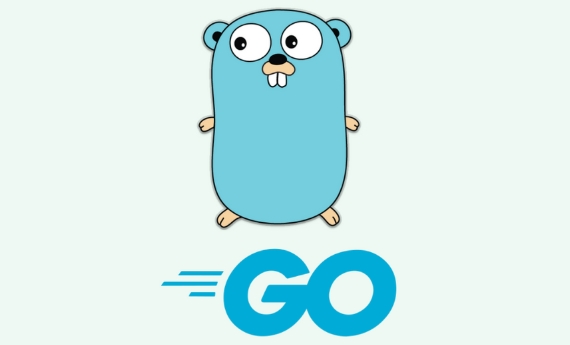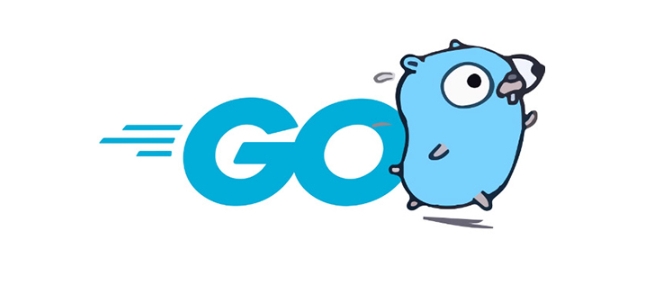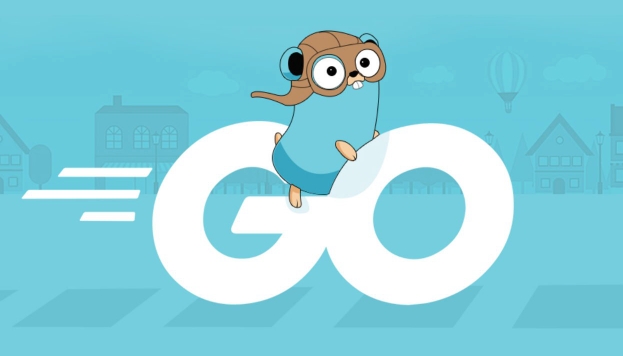It is feasible to use computer vision applications in Go, especially suitable for back-end developers and system programming enthusiasts. Although Go is not designed for image processing, it has good performance, strong concurrency capabilities and simple deployment, making it suitable for building high-performance image processing services. It is recommended to use gocv, imagick, go-face and tinygo libraries for development, and it is recommended to start practicing from gocv. In actual development, attention should be paid to image data format, memory management, GPU accelerated integration and multi-threaded access control. Deployment leverages Go's static compilation benefits, combining upx compression, hardware acceleration and performance analysis tools to optimize programs.

Many people will find it a bit strange at first when learning Go language to do computer vision applications - after all, Python occupies an absolute mainstream in the CV field. But if you are a back-end developer, system programming enthusiast, or want to embed visual capabilities into high-performance services, Go is actually a very suitable choice.

Is Go really reliable in making computer Vision?
In fact, Go is not a language created for image processing, but it has several obvious advantages: good performance, strong concurrency capabilities, and simple deployment. These are very important for building image processing services. For example, if you want to build a real-time video stream analysis system, Go's goroutine can easily manage hundreds or thousands of concurrent connections, and the memory usage is much less than Python.
Of course, there are also disadvantages, such as the ecology is not as rich as Python, and many deep learning models still need to be trained on Python. But Go is fully capable of doing inference, encapsulating APIs, and building lightweight processing processes.

How to start? Recommend these libraries
Although Go is not as comprehensive as OpenCV in terms of computer vision, there are some good open source projects to use:
- gocv : This is the closest Go binding to OpenCV, which supports many traditional image processing operations and also supports DNN module for inference.
- imageck : Based on ImageMagick, it is suitable for basic operations such as image format conversion, scaling, and filtering.
- go-face : A dedicated library for face recognition, with built-in face detection and feature extraction functions.
- tinygo : If you want to go in the embedded direction, TinyGo supports running image processing code on edge devices.
It is recommended to start practicing with gocv, the documentation is relatively complete and the community activity is OK.

What should you pay attention to in actual development?
When doing image processing services, some pitfalls you will sooner or later:
- The image data format is easy to be confused. For example, BGR and RGB have one channel order, and the result is completely different.
- Memory management is very important, and improper processing of large images or video streams can easily explode memory.
- If you want to use GPU acceleration, Go is not as convenient as Python. You need to integrate CUDA yourself or use ONNX Runtime.
- When processing images with multiple threads, remember to lock or use channel to avoid errors in accessing image resources at the same time by multiple goroutines.
For example: you process multiple camera video streams at the same time, and each stream uses a goroutine to draw frames, process, and return results. If the number of concurrent is not controlled at this time, it may cause a crash due to resource exhaustion. It is recommended to add a worker pool to control the concurrency number.
Don't ignore deployment and optimization
One of the advantages of Go is its ease of deployment. You can directly compile it into a binary file and throw it on the server without a bunch of dependencies. However, image processing programs are usually large in size, especially when using gocv, which binds the C library, the final executable file may be hundreds of MB.
Optimization suggestions:
- Pay attention to volume when using static links, and use upx to compress if necessary
- If the deployment environment has a GPU, try to enable hardware accelerated inference
- Use the profiling tool to find out the bottleneck, such as which image processing step is the slowest
Basically that's it. Go is not the mainstream choice for Computer Vision, but it can indeed give full play to its advantages in specific scenarios. As long as you choose the right tool chain, it is not difficult to write.
The above is the detailed content of Go for Computer Vision Applications. For more information, please follow other related articles on the PHP Chinese website!

Hot AI Tools

Undress AI Tool
Undress images for free

Undresser.AI Undress
AI-powered app for creating realistic nude photos

AI Clothes Remover
Online AI tool for removing clothes from photos.

Clothoff.io
AI clothes remover

Video Face Swap
Swap faces in any video effortlessly with our completely free AI face swap tool!

Hot Article

Hot Tools

Notepad++7.3.1
Easy-to-use and free code editor

SublimeText3 Chinese version
Chinese version, very easy to use

Zend Studio 13.0.1
Powerful PHP integrated development environment

Dreamweaver CS6
Visual web development tools

SublimeText3 Mac version
God-level code editing software (SublimeText3)

Hot Topics
 css dark mode toggle example
Jul 30, 2025 am 05:28 AM
css dark mode toggle example
Jul 30, 2025 am 05:28 AM
First, use JavaScript to obtain the user system preferences and locally stored theme settings, and initialize the page theme; 1. The HTML structure contains a button to trigger topic switching; 2. CSS uses: root to define bright theme variables, .dark-mode class defines dark theme variables, and applies these variables through var(); 3. JavaScript detects prefers-color-scheme and reads localStorage to determine the initial theme; 4. Switch the dark-mode class on the html element when clicking the button, and saves the current state to localStorage; 5. All color changes are accompanied by 0.3 seconds transition animation to enhance the user
 VSCode settings.json location
Aug 01, 2025 am 06:12 AM
VSCode settings.json location
Aug 01, 2025 am 06:12 AM
The settings.json file is located in the user-level or workspace-level path and is used to customize VSCode settings. 1. User-level path: Windows is C:\Users\\AppData\Roaming\Code\User\settings.json, macOS is /Users//Library/ApplicationSupport/Code/User/settings.json, Linux is /home//.config/Code/User/settings.json; 2. Workspace-level path: .vscode/settings in the project root directory
 css dropdown menu example
Jul 30, 2025 am 05:36 AM
css dropdown menu example
Jul 30, 2025 am 05:36 AM
Yes, a common CSS drop-down menu can be implemented through pure HTML and CSS without JavaScript. 1. Use nested ul and li to build a menu structure; 2. Use the:hover pseudo-class to control the display and hiding of pull-down content; 3. Set position:relative for parent li, and the submenu is positioned using position:absolute; 4. The submenu defaults to display:none, which becomes display:block when hovered; 5. Multi-level pull-down can be achieved through nesting, combined with transition, and add fade-in animations, and adapted to mobile terminals with media queries. The entire solution is simple and does not require JavaScript support, which is suitable for large
 css full page layout example
Jul 30, 2025 am 05:39 AM
css full page layout example
Jul 30, 2025 am 05:39 AM
Full screen layout can be achieved using Flexbox or Grid. The core is to make the minimum height of the page the viewport height (min-height:100vh); 2. Use flex:1 or grid-template-rows:auto1frauto to make the content area occupy the remaining space; 3. Set box-sizing:border-box to ensure that the margin does not exceed the container; 4. Optimize the mobile experience with responsive media query; this solution is compatible with good structure and is suitable for login pages, dashboards and other scenarios, and finally realizes a full screen page layout with vertical centering and full viewport.
 How to handle transactions in Java with JDBC?
Aug 02, 2025 pm 12:29 PM
How to handle transactions in Java with JDBC?
Aug 02, 2025 pm 12:29 PM
To correctly handle JDBC transactions, you must first turn off the automatic commit mode, then perform multiple operations, and finally commit or rollback according to the results; 1. Call conn.setAutoCommit(false) to start the transaction; 2. Execute multiple SQL operations, such as INSERT and UPDATE; 3. Call conn.commit() if all operations are successful, and call conn.rollback() if an exception occurs to ensure data consistency; at the same time, try-with-resources should be used to manage resources, properly handle exceptions and close connections to avoid connection leakage; in addition, it is recommended to use connection pools and set save points to achieve partial rollback, and keep transactions as short as possible to improve performance.
 Full-Stack Web Development with Java, Spring Boot, and React
Jul 31, 2025 am 03:33 AM
Full-Stack Web Development with Java, Spring Boot, and React
Jul 31, 2025 am 03:33 AM
Selecting the Java SpringBoot React technology stack can build stable and efficient full-stack web applications, suitable for small and medium-sized to large enterprise-level systems. 2. The backend uses SpringBoot to quickly build RESTfulAPI. The core components include SpringWeb, SpringDataJPA, SpringSecurity, Lombok and Swagger. The front-end separation is achieved through @RestController returning JSON data. 3. The front-end uses React (in conjunction with Vite or CreateReactApp) to develop a responsive interface, uses Axios to call the back-end API, and ReactRouter
 Java Performance Optimization and Profiling Techniques
Jul 31, 2025 am 03:58 AM
Java Performance Optimization and Profiling Techniques
Jul 31, 2025 am 03:58 AM
Use performance analysis tools to locate bottlenecks, use VisualVM or JProfiler in the development and testing stage, and give priority to Async-Profiler in the production environment; 2. Reduce object creation, reuse objects, use StringBuilder to replace string splicing, and select appropriate GC strategies; 3. Optimize collection usage, select and preset initial capacity according to the scene; 4. Optimize concurrency, use concurrent collections, reduce lock granularity, and set thread pool reasonably; 5. Tune JVM parameters, set reasonable heap size and low-latency garbage collector and enable GC logs; 6. Avoid reflection at the code level, replace wrapper classes with basic types, delay initialization, and use final and static; 7. Continuous performance testing and monitoring, combined with JMH
 A Guide to Java Flight Recorder (JFR) and Mission Control
Jul 31, 2025 am 04:42 AM
A Guide to Java Flight Recorder (JFR) and Mission Control
Jul 31, 2025 am 04:42 AM
JavaFlightRecorder(JFR)andJavaMissionControl(JMC)providedeep,low-overheadinsightsintoJavaapplicationperformance.1.JFRcollectsruntimedatalikeGCbehavior,threadactivity,CPUusage,andcustomeventswithlessthan2%overhead,writingittoa.jfrfile.2.EnableJFRatsta






